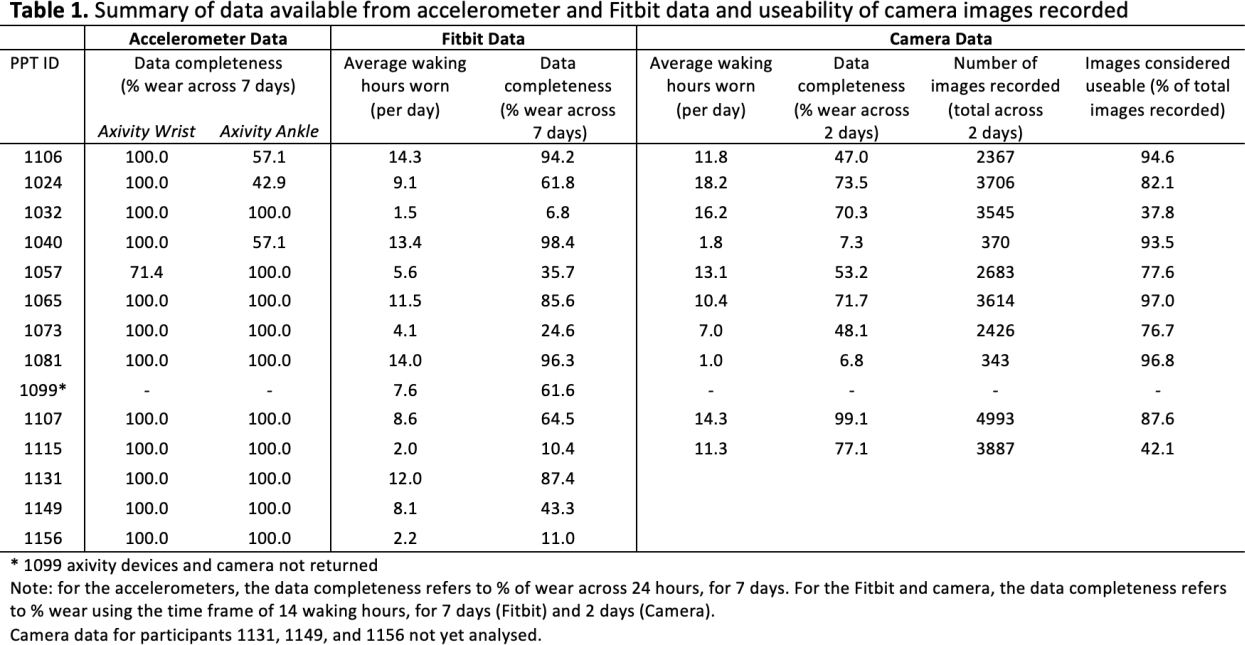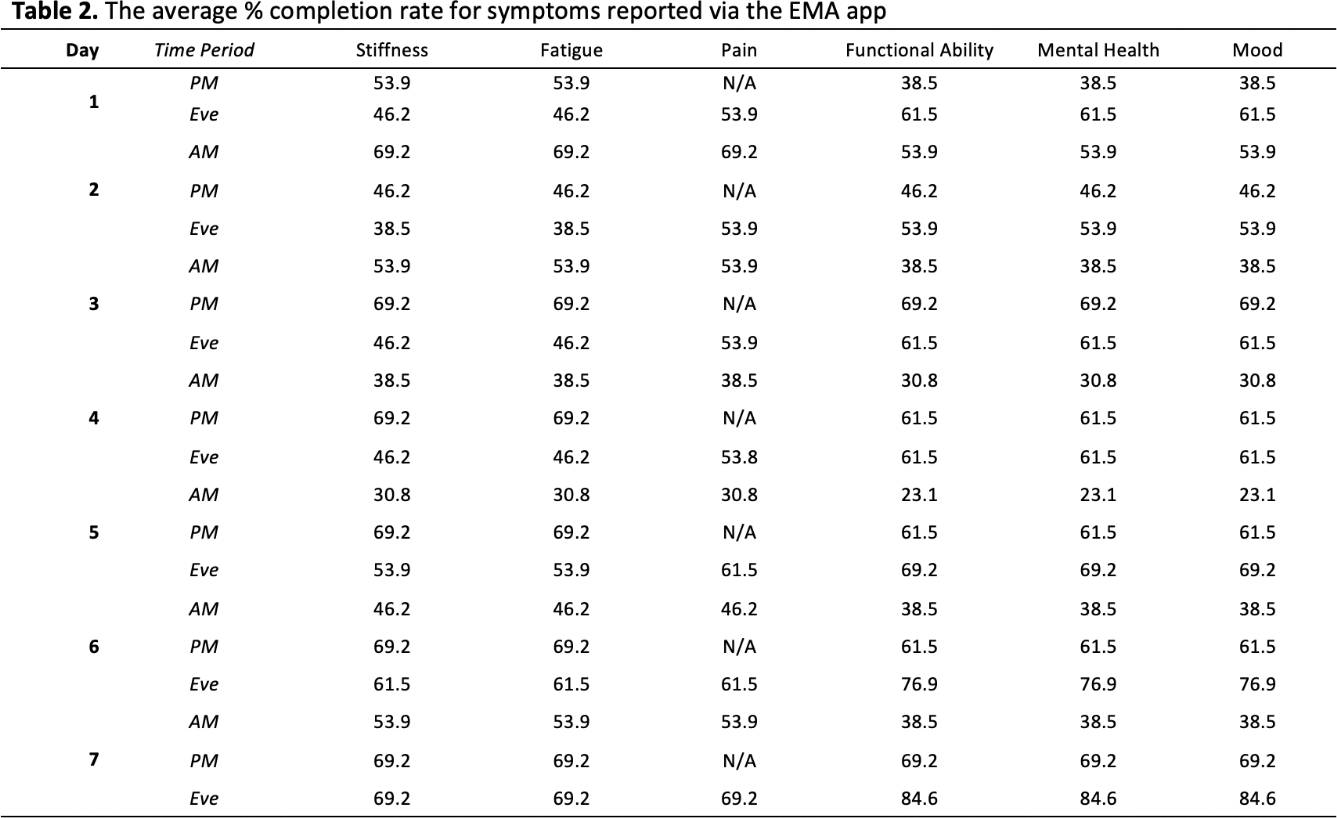

Background: Rheumatoid Arthritis (RA) is an autoimmune inflammatory disease, which can result in pain, physical disability, compromised mental health and an increased risk of other diseases. Physical activity (PA) at a moderate-to-vigorous intensity is often recommended to manage symptoms of RA and reduce the risk of comorbidities. However, the symptoms of RA (e.g., pain and fatigue) are common barriers to undertaking structured exercise at such intensities, suggesting alternative approaches to promoting PA are required. There is evidence to show that higher overall volume of PA (including at lower intensities) and lower sedentary time, can improve the health and symptoms of people living with RA. The MovIng to Support Sustained Improvements of Outcomes iN Rheumatoid Arthritis (MISSION-RA project) aims to develop a mobile health app personalised for people living with RA, to support them to increase their overall volume of PA.
Objectives: The MISSION-RA app will employ Artificial Intelligence (AI) to provide personalised support for PA behaviour change, based on individuals; 1) current and past PA behaviour (e.g. time, intensity, type), and 2) links with symptoms (e.g. pain and fatigue) and health outcomes. We are currently conducting an initial study (n = 150 people living with RA), to understand associations between PA with symptoms and health outcomes, at both the group (RA cohort), and individual level. This requires concurrent, momentary, real-time assessment of both free-living PA and symptoms. Here, we report on the feasibility of the methods required to collect this data.
Methods: Participants are recruited from outpatient clinics at NHS Trusts, as well as via online advertisements using MISSION-RA and National Rheumatoid Arthritis Society (NRAS) platforms. PA data is being collected via wearables Axivity AX3 accelerometers worn on the dominant wrist (1) and ankle (2), and a Fitbit worn on the non-dominant wrist for 7 days. A body-worn camera (Matrix Science) is worn on the chest for 2 days, and records images every 20 seconds. Symptom data are captured by app-based Ecological Momentary Assessment (EMA). Participants are prompted to respond to questions about their symptoms (pain, fatigue, stiffness), mood and wellbeing 3 times a day, for 7 days. Accelerometer and Fitbit data for n = 14 participants was downloaded, and the number of hours with data across the 7 days was exported. From this, the % of wear across 24 hours, for 7 days (accelerometer) and across 14 hours, for 7 days (Fitbit) was calculated. Camera images for n = 11 participants were counted and visually inspected for “useability” (based on image clarity). The data completeness was calculated as % wear using the time frame of 14 waking hours, for 2 days.
Results: This study is still recruiting. Data presented here is from n = 14 people living with RA (n = 24 expected by June 2025). Wearables: A summary of the data available from wearables is reported in Table 1. On average, accelerometer and Fitbit data is available for 97.1% (Axivity wrist), 87.5% (Axivity ankle) and 73.2% (Fitbit) of the 7-day measurement time frame. The median number of days with wearable data is 7 days for both the wrist and ankle accelerometers, and 5.5 days for the Fitbit. Based on the camera wear protocol (expected 14 hours/day (e.g. 7am – 9pm), 2 day wear, images taken every 20 seconds), a total of 5040 images should be recorded for each participant. The average number of camera images recorded across all participants is 2793 (55.4% of the total 5040 that should be available). The median number of camera images recorded is 3114. The average % of available images that are considered “usable” (based on image clarity) is 74.4%, ranging from 97.0%, to 37.8%. App-based EMA: The average % completion rate for symptoms reported via the EMA app is described in Table 2. The highest % completion rate was observed on day 7, and the lowest on day 1. All questions assessing symptoms exhibited a similar completion (~50%).
Conclusion: These preliminary results highlight that real-time collection of concurrent data on free-living PA (using wearables) and symptoms (using an EMA app) in people living with RA, is feasible. The use of wearable cameras to collect free-living data on PA is novel, and provides an objective reference of types of PA, which cannot be collected by accelerometery. The data here suggests that this approach is feasible, and provides an exciting avenue for future PA research in people living with RA. In this study, these data will be used to 1) understand links between symptoms and PA (intensity, time, type), and 2) develop machine learning models able to classify specific types of PA and sedentary behaviour from raw accelerometer data, in people living with RA.
REFERENCES: NIL.


Acknowledgements: We would like to acknowledge the National Rheumatoid Arthritis Society (NRAS) for their input and contributions to the MISSION-RA project.
Disclosure of Interests: None declared.
© The Authors 2025. This abstract is an open access article published in Annals of Rheumatic Diseases under the CC BY-NC-ND license (